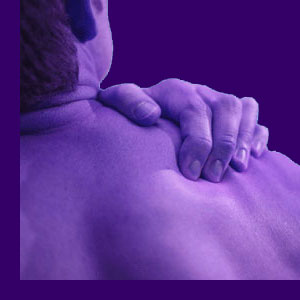
A pulled muscle in the back is a colloquial term for a minor injury to any of the muscles, tendons or ligaments in the back. While usually a term used in self diagnosis, a pulled back muscle can indeed exist and may be incredibly painful for a time. Some muscular pulls might even require medical care in order to fully heal or become completely rehabilitated.
While the name pull implies that the muscle is out of its proper place, this is rarely the case. In most scenarios, symptoms are elicited because of small rips in the muscle chains, causing general discomfort and heightened pain upon movement. In very few cases does the muscle pull away from its attachments or wind up out of proper anatomical placement, although this can occur.
This discussion focuses on the diversity of soft tissue pull injuries that can create acute back pain and might even lay the foundation for chronic pain to begin.
Types of Pulled Muscles in the Back
A pulled muscle can describe any of the following soft tissue injuries to the back or spine: torn or detached muscles, torn or detached ligament or torn or detached tendons.
Obviously, small tears might be painful, but should not present a very serious health concern, beyond simple discomfort. These can be generally treated using OTC pain management drugs, ice and heat and activity avoidance. Serious tears or detachments should receive appropriate medical attention and may even warrant surgical intervention in very rare instances.
Symptoms of a Pulled Back Muscle
A pulled muscle or damaged ligament or tendon can create back pain symptoms similar to many other structural sources of pain in the back and spine. The most common of these occurrences include:
Localized and radiating pain in the traumatized region, especially upon movement is a universal clinical presentation.
Limited range of motion in the affected and surrounding area usually begins soon after the initial injury and worsens for the first 24 to 48 hours before beginning to resolve.
Heat in the muscle or a general burning sensation is reported by many patients.
It is important to receive an accurate diagnosis for any ongoing chronic back pain condition to make sure there are no problematic spinal concerns responsible for the symptomatic expression.
X-rays will not be able to properly diagnose any muscular issue, but a spinal MRI might be helpful to determine the exact source of back ache. Generally, a physical exam will be useful to rule out structural spinal causations and narrow in on the soft tissues as the painful complaint. However, it is wise to be sure by undergoing confirmation imaging, as well.
Pulled Muscle in the Back Factsheet
Rehabilitation is crucial for serious muscular back injuries. Taking the time to work with a caring and professional physical therapist is the best advice when trying to recover from a muscular trauma.
Show an interest in your own care and learn exactly what happened to damage your back and how you can prevent such circumstances in the future. Make sure to ask your doctor if scar tissue might become an issue and what you can do to optimize healing of the injury.
I have injured lots of soft tissues throughout my body during intense martial arts training and competition. Some of these injuries healed quickly and some took quite a long time. In some circumstances, you must be patient and allow stubborn injuries to fully resolve before finding true relief.
Remember that your mental and emotional states also factor heavily into the healing process, so be sure to do everything possible to create the right mindset in order to facilitate a speedy recovery from back pain.





